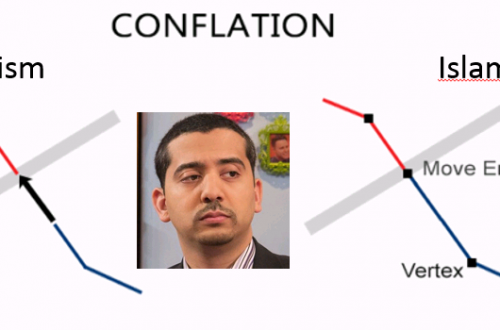In a New York Times op-ed earlier this month, Kurt Andersen made some points about the legacy of the 1960s “counter-culture” which Thomas Frank, among others, have made in various forms– but which are worth being reminded of.
He wrote:
This spring I was on a panel at the Woodstock Writers Festival. An audience member asked a question: Why had the revolution dreamed up in the late 1960s mostly been won on the social and cultural fronts — women’s rights, gay rights, black president, ecology, sex, drugs, rock ’n’ roll — but lost in the economic realm, with old-school free-market ideas gaining traction all the time?
There was a long pause. People shrugged and sighed. I had an epiphany, which I offered, bumming out everybody in the room.
What has happened politically, economically, culturally and socially since the sea change of the late ’60s isn’t contradictory or incongruous. It’s all of a piece. For hippies and bohemians as for businesspeople and investors, extreme individualism has been triumphant. Selfishness won.
…..
Consider America during the two decades after World War II. Stereotypically but also in fact, the conformist pressures of bourgeois social norms were powerful. To dress or speak or live life in unorthodox, extravagantly individualist ways required real gumption. Yet just as beatniks were rare and freakish, so were proudly money-mad Ayn Randian millionaires. My conservative Republican father thought marginal income tax rates of 91 percent were unfairly high, but he and his friends never dreamed of suggesting they be reduced below, say, 50 percent. Sex outside marriage was shameful, beards and divorce were outré — but so were boasting of one’s wealth and blaming unfortunates for their hard luck. When I was growing up in Omaha, rich people who could afford to build palatial houses did not and wouldn’t dream of paying themselves 200 or 400 times what they paid their employees. Greed as well as homosexuality was a love that dared not speak its name.But then came the late 1960s, and over the next two decades American individualism was fully unleashed. A kind of tacit grand bargain was forged between the counterculture and the establishment, between the forever-young and the moneyed.
…..
“Do your own thing” is not so different than “every man for himself.” If it feels good, do it, whether that means smoking weed and watching porn and never wearing a necktie, retiring at 50 with a six-figure public pension and refusing modest gun regulation, or moving your factories overseas and letting commercial banks become financial speculators. The self-absorbed “Me” Decade, having expanded during the ’80s and ’90s from personal life to encompass the political economy, will soon be the “Me” Half-Century.People on the political right have blamed the late ’60s for what they loathe about contemporary life — anything-goes sexuality, cultural coarseness, multiculturalism. And people on the left buy into that, seeing only the ’60s legacies of freedom that they define as progress. But what the left and right respectively love and hate are mostly flip sides of the same libertarian coin minted around 1967. Thanks to the ’60s, we are all shamelessly selfish.
Thomas Geoghegan, a Chicago labor lawyer, made a similar point in his funny, heartbreaking 1991 book “Which Side Are You On?” about the decline of the American trade union movement (although there still are important victories from time to time). He writes about the appeal of becoming involved with organized labor (as I was for many years in St. Louis):
[I]t was the appeal of stepping into some black hole in American culture, with all the American values except one: individualism. And here, in this black hole, paunchy, middle- aged men, slugging down cans of beer, come to hold hands, touch each other, and sing “Solidarity Forever.” O.K., that hardly ever happens, but most people in this business, somewhere, at some point, see it once, and it is the damnedest un-American thing you will ever see. Two or three days later, you will not even believe you saw it. I had to see it twice before I could believe I saw it once.
Labor thinks of itself, consciously, as American as apple pie. But it is not. Go to any union hall, any union rally, and listen to the speeches. It took me years to hear it, but there is a silence, a deafening Niagara-type silence, on the subject of individualism. No one is against it, but it never comes up. Is that America? To me, it is like Spain.
Individualism is for scabs. This country is set up for scabs. Crossing a picket line, making your own deal. America is the land of opportunity. And a strike, if nothing else, creates lots of opportunities.
…..
Even liberals, even progressives, do not seem to need us. At least, organized labor, I think, is incomprehensible to them. In some ways, American liberals, even American radicals, have more in common with the Reagan right than they do with us. All of them, the whole bunch, are middle-class, Emersonian individualists. Emerson, Thoreau, all of these guys are scabs. Lane Kirkland [then the very Establishment president of the AFL-CIO] is outside the American consensus in a way that even Abbie Hoffman never was.
…..
Look, I support the ACLU. But, seriously: give those people everything they want, the whole Bill of Rights, and it would not cost the country a thing. It would be no big deal. But give labor anything it wants, even a lousy ten-man machine shop, and every drop of it is blood. It all comes out of a bottom line.Solidarity. Dear sir and brother. The little rituals of a nineteenth-century criminal conspiracy. The whole thrust of labor is to . . . well, not socialism… Anyway, none of us would know what socialism means. The very idea of it is gone, blanked out, from the disconnected halves of our labor union brains. No wonder we are weird. Labor shambles around like Frankenstein, half its brain gone, scaring the culture of narcissism, and really, all we want is a little love. Solidarity. Union. It is the love, the only love left in this country, that dare not speak its name.


